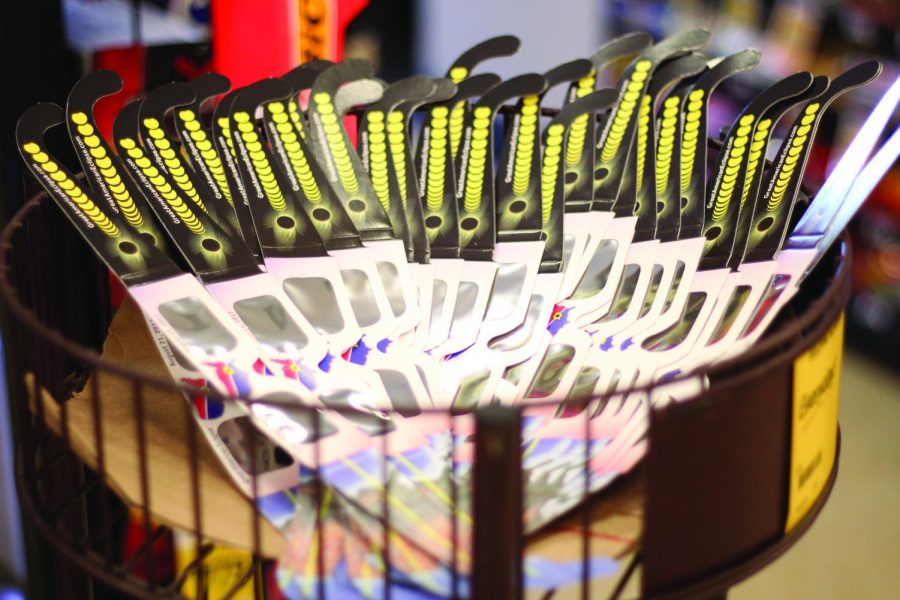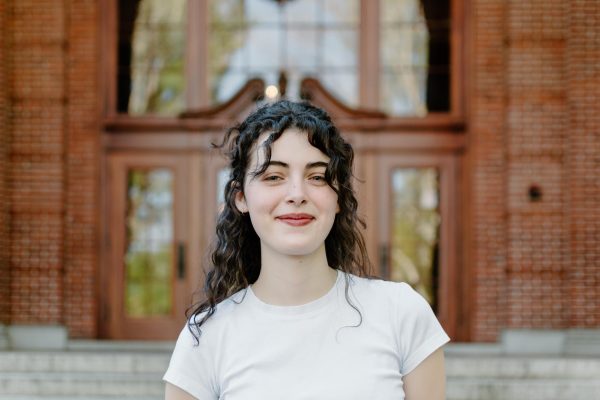Back in late 2017, when the world was abuzz over the total solar eclipse, viewers experienced a few moments in the middle of the day where the sky grew dark.
It was a rare instance where humans were able to look directly at the sun.
Phia Morton, president of the Oregon State Astronomy Club, reminds students that the eclipse happening Saturday is an annular– not total– eclipse and there are different safety recommendations.
“If you want to view it, you have to have the proper eclipse glasses unless you want to go blind, which I don’t recommend,” Morton said.
During total solar eclipses, the moon completely blocks the sun. If you look at the phenomena through a telescope or naked eyes, all that can be seen of the sun is its corona (the outermost part of the sun’s atmosphere).
However, during an annular eclipse, the moon is further from the earth. To understand this, it is important to remember the moon’s orbit isn’t exactly circular, it’s more oval-shaped. On Oct. 14, the moon will be at the very tip of this oval, and when it passes between us and the sun, it will only partially cover the sun.
“So you’ll still see a ring of Sun around the moon, and that’s what people describe as the ‘Ring of Fire’ look,” Morton said.
This is why it is important to come with solar-filtered glasses. While most of the sun will be covered, some of it will still be visible. Luckily, these glasses are widely available.
“I wouldn’t recommend reusing eclipse glasses from 2017 unless you have put them somewhere safe,” Morton said, “If they got accidentally damaged moving around and stuff, then I wouldn’t risk trying to use those.”
Morton recommends ordering them online in advance or going to Home Depot, which has them stocked for the occasion.
The OSU Astronomy Club is also hosting a viewing from Peavy Field at 8 a.m. on Oct. 14 with glasses to hand out as well as special telescope lenses to view the eclipse through.
In addition to the viewing itself, the Astronomy Club is also hosting an event with Randall Milstein, a professor of physics at OSU, on Oct. 12 at 8 p.m. in Weniger Hall.
The event will illuminate what is happening during the eclipse, and also include some safety basics.
“We want people to know that it’s happening and then look at it safely,” Morton said.


















































































![Newspaper clipping from February 25, 1970 in the Daily Barometer showing an article written by Bob Allen, past Barometer Editor. This article was written to spotlight both the student body’s lack of participation with student government at the time in conjunction with their class representatives response. [It’s important to note ASOSU was not structured identically to today’s standards, likely having a president on behalf of each class work together as one entity as opposed to one president representing all classes.]](https://dailybaro.orangemedianetwork.com/wp-content/uploads/2025/03/Screenshot-2025-03-12-1.00.42-PM-e1741811160853.png)


























